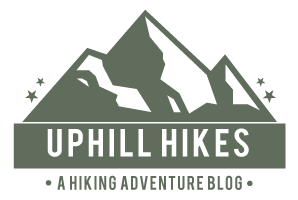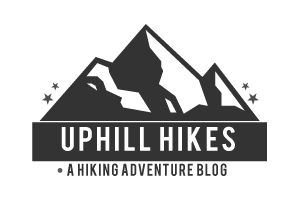
06 Feb Kayaking Everglades NP
On January 24th I set out on a 7-day kayaking adventure across Everglades National Park. I camped over the water on wooden platforms called “chickees”, on ground sites built by the Calusa from mounds of oyster shells, and on the beaches of Florida keys.
My original idea was to kayak the 99 miles along the Wilderness Waterway (WW) tracing a route through rivers, bays, and creeks from Everglades City at the northwest corner of the Everglades to Flamingo at the southern tip of the Florida peninsula. Upon researching this idea, I opted for a loop route out of Everglades City. The reason being that this would involve the difficulty and expense of hiring a 2.5 hour $450 shuttle. Besides, I was a novice of remote kayak trips with tidal currents and open water.
I own a 9 foot Old Towne kayak which was fine for overnight trips I had taken on the Suwanee River and on Fontana Lake. This kayak didn’t seem suitable for extended touring trips with difficult conditions, so I began shopping for a “bigger boat”. I settled on the Wilderness Systems Tsunami 140 (14 foot) touring kayak with a rudder. The added length would increase hull speed and the rudder would help hold a line in the cross-currents and winds of open water and would aid on the tight turns of serpentine creeks.
Another concern was simply finding my way. After all, I was going solo. I’m used to hiking where I can easily follow a trail, though sometimes with a GPS assist for snow-covered terrain. The Everglades is an altogether different matter. It is a byzantine maze of mangrove waterways, islands, bays, creeks, and rivers. Though the WW is marked with numbered posts, all water looks the same and it would be easy to wander well off the route. There is no cell phone coverage. Unlike hiking, where camp can be set up nearly anywhere along the trail, missing the official campsite in the Everglades means looking forward to a long sleepless night in a kayak. At the outset, I knew that I needed satellite GPS connectivity. I bought a Garmin Mini and downloaded the companion Earthmate App with it’s nautical charts. As backup, I bought waterproof paper nautical charts and carried a traditional compass. I placed my Iphone 11 Pro on a heavy duty bike phone mount on the front of the kayak cockpit. This served as my map/GPS dashboard. With the Garmin Mini, I could stay in touch with home and in case of an emergency, “hit the SOS button”.
Here is my overall trip track on Earthmate. An aerial map layer is shown; however, I used the nautical chart layer to better see navigational markers and water depths.

Although the Everglades is mostly water, there is no drinkable water on the Wilderness Waterway. The water is brackish so filtering and treatment does no good. It is recommended to carry at least a gallon per day. I carried four 1.3 gallon collapsible containers plus three 2.5 liter collapsible platypus containers and 3 smaller water bottles. Loaded down with water and camping gear, I launched into Chokoloskee Bay out of Everglades City at mid-day.
Here I am approaching Crooked Creek Chickee on the Lopez River. All night I heard fish splashing and skittering across the water. The fishing must be good here, but I didn’t bring my fishing gear.

Below is another view of Crooked Creek Chickee. This is a double Chickee, but I was the only one camping here. As you can see, there is a porta-potty on the Chickee. Every campsite on the Wilderness Waterway has porta-potties.

I kicked back on the chickee, sitting in a deck chair that someone had left behind. I also relaxed in my hammock and read books on my Kindle. With a roof, there was no need to use my tent fly so I enjoyed wide-sky views through this tent’s ample mosquito screens. Among the other purchases I made for the trip was this free-standing tent needed for platform camping. Also, notice how the kayak rests well below the platform. It was a little strenuous, to lean over the edge of the deck to load and unload the kayak, particularly at low tide.

Raccoons are a problem here. Campers are warned that they will chew through water containers for a drink of fresh water. Since I had to carry all of my water in soft containers, I chose to sleep with my water. A raccoon was going to have to crawl over my sleeping body to get at my water.
Much less threatening than raccoons were the Ibis. This Ibis was working the mud next to my chickee in search of yummy crawly things. Other than fish, the Ibis was the most common wildlife.

Here is another Earthmate aerial view of my track. This shows a small portion of my route on the 2nd day. From the bottom the course follows Lopez River into the crooked creek called “Crooked Creek” then into a larger body of water, Sunday Bay.

My 2nd night camping was at Darwin’s Place, seen below. For many years, this small island was home to a man named Charles Darwin who claimed to be 5th generation from the better known evolutionist. This hermit lived in a tabby house here and raised rabbits while living to the ripe old age of 112. I set up my tent in the foundation ruins of Darwin’s tabby house.
There were 3 older men from Maine who also camped at this sight. Each had their own flatboat (skiff) and shared enormous tents furnished with tables, chairs, cots, electric, stoves, dry ice coolers, and everything else you could think of to make life comfortable. They could live comfortably while completely sheltered from mosquitoes. Out for a 3 day camping/fishing trip, this was their base. One caught a 36 inch redfish along with a smaller trout. It is safe to say that their fresh fried fish dinner was markedly more delicious than my canned minestrone soup.

Below is the only alligator I encountered. Swimming wasn’t encouraged.


On the third day I was making good time so I stopped here at Plate Creek Chickee only a mile short of my camp at Lostman’s Five. I took a long break. I set up my hammock, read my book, and ate lunch.


Here is the view from my tent at Lostman’s Five. This is a ground-site with a dock, but I was able to place my small tent on the dock and enjoy the view. This was the 2nd night camping by myself.

Below is a screen capture of Earthmate’s Nautical Map Layer with its low-tide depth numbers. It shows where I passed down Lostman’s River into First Bay and out into the Gulf of Mexico on the 4th day. In order to have favorable tides on Lostman’s River, I set out from Lostman Five campsite in the dark. Kayaking the Everglades before sunrise is an incredible experience. Paddling in the dark through early morning mists and fogs over dead still water made this the best and most mystic day of the adventure.


Hog Key, shown below, was the only official camp area without a Porta-Potty. I was finally in the Gulf of Mexico.

The tide was out over a quarter-mile the next morning, so I waited on the tide until leaving Hog Key around 11 AM. There was a small-craft advisory, high winds and choppy waters. After struggling to paddle only three-quarters of a mile to the next point of land, I stopped to eat my lunch and re-evaluate. Given the waves, I was in danger of swamping my kayak. The wind was ferocious and I was paddling straight into the wind. I considered whether I should hunker down where I was. Would I have enough food? Would the weather improve? I used my Garmin to request a weather report. It didn’t look good. High winds forecasted overnight. Eventually, I decided to set out again with the intention of just reaching the next point of land. As I moved toward the Ten Thousand Islands area, there would be plenty of choices. Before moving on, I dumped water out of my kayak. After another hard crossing, I stopped at another key and again dumped water. Eventually, after fighting wind all day, I reached Mormon Key, one of the park service’s official camping locations. That night I shared the beach with 3 guys who were out with their power boat. The original plan was to make my way up Chatham River to Watson’s Place, but the weather forced me to bypass Watson’s Place and continue north up the Gulf Coast to Rabbit Key where I had planned my 6th and last night. This cut out about 12 miles from my original trip itinerary.
I explored Rabbit Key by walking around it’s perimeter.



At night, this seabird continued it’s loud squawking.


On January 30th, I kayaked from Rabbit Key up the pass and into Chokoloskee Bay where I completed my journey. Along the way, the porpoises were putting on a spectacular show. They ripped through the surface, spraying and splashing water. Working in teams, they trapped prey by pushing fish toward the edge of the shore. At times, the speed and acceleration of a porpoise surpassed anything in nature I had previously witnessed, breaking the surface and ripping the water apart with unnatural velocity.


